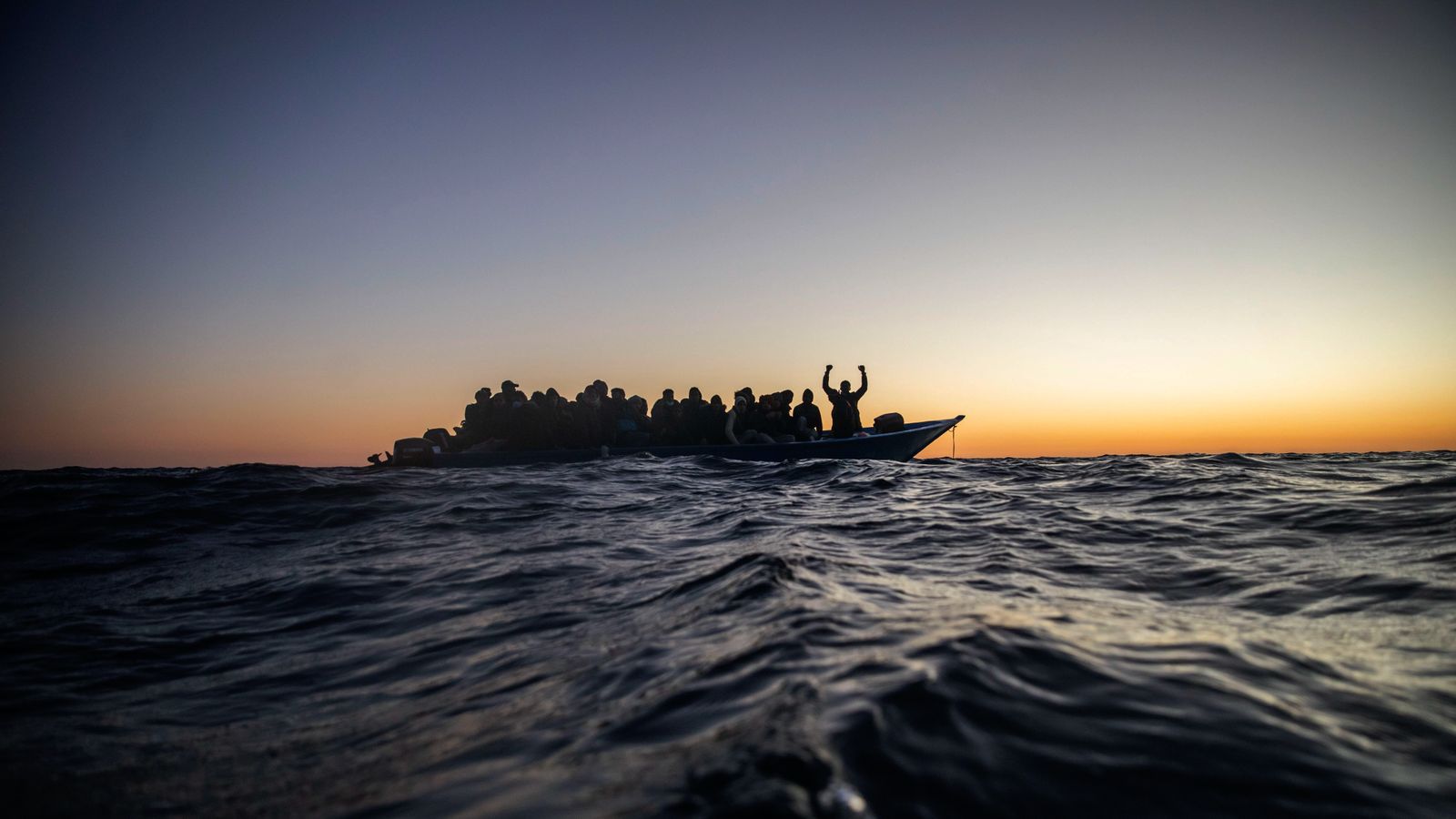Migrants and refugees wait for assistance on an overcrowded wooden boat, as aid workers of the Spanish NGO Open Arms approach them in the Mediterranean Sea, in international waters, at 122 miles off the Libyan coast [AP Photo/Bruno Thevenin]
The boat disaster off the Tunisian coast on October 22, in which at least 40 people, including infants, lost their lives, is not an accident but a crime. The European Union (EU) and its member governments, including the Berlin coalition of the Christian Democrats (CDU/CSU) and the Social Democratic Party (SPD), are responsible. With their inhuman refugee policy, they consciously accept such catastrophes.
It was no coincidence that on the very day that 40 refugees drowned off Tunisia in the early morning, that evening Chancellor Friedrich Merz (CDU) once again described migrants in Berlin as “problems in the urban landscape.” The notorious EU agency Frontex recently boasted that “irregular border crossings” had fallen by 20 percent in the first half of 2025.
Politicians such as Merz in Berlin, President Emmanuel Macron in Paris, Prime Minister Keir Starmer in London and President of the European Commission Ursula von der Leyen in Brussels are responsible for the truly deadly conditions that have arisen at Europe’s external borders. What do these conditions look like in concrete terms? The latest disaster off Tunisia casts a spotlight on them.
Instead of doing what ordinary travellers do—buying a plane ticket or booking a passage by ship and reaching Europe via ports, airports and railway stations within a few hours—people were forced first to cross the Sahara on foot. They had to watch out for Tunisian border guards, notorious for seizing migrants and abandoning them in the desert without drinking water.
The people concerned likely paid thousands of euros to a smuggling network or a trafficker before they could set out for Italy. The coastline south of Mahdia around Salakta is an important departure point, as the distance from there to the Italian island of Lampedusa is only about 130 kilometres.
In the middle of the night, October 21–22, the people boarded an old wooden boat, grossly overloaded with around 70 passengers. The engine, too, was no match for the rough seas that night.
The boat capsized shortly after leaving, still in Tunisian waters, and horrific scenes must have unfolded. It was only in the early hours that the Tunisian coastguard reached the site of the disaster. Of roughly 70 people, it was able to rescue only 30. Among the drowned were families with small children, and an Italian source even reported a newborn among the dead.
The spokesman for the court in Mahdia, Walid Chaterbi, confirmed that all the victims and survivors came from countries south of the Sahara. The Tunisian authorities responded with assurances that they were massively stepping up their efforts to prevent crossings.
This is precisely what the Tunisian government is being paid by the EU to do: prevent migration to Europe. Just a few days before the disaster, the EU in Brussels presented a new pact for the Mediterranean, placing such cooperation with Tunisia at its centre. The pact is to be adopted in November, when the EU celebrates the 30th anniversary of the so‑called “Barcelona Process” (EUROMED), its partnership with its neighbours to the south of the Mediterranean.
However, sealing off the North African coast merely increases the pressure on migrants and smugglers to attempt ever riskier and more deadly crossings.
Thus, the disaster of October 22 adds a further 40 dead to the gruesome “Missing Migrants” tally of the IOM (International Organization for Migration). Since 2014, the IOM has recorded more than 77,330 deaths on migration routes worldwide. The year 2024 saw a new and tragic record, with almost 9,200 deaths. The number of unreported cases is high, as many of these deaths are never reported or recorded.
What is certain is that the central Mediterranean route is by far the deadliest flight route in the world. At least 25,500 people have already lost their lives on this route since 2014. In just the first nine months of this year, the IOM has already registered over a thousand people who lost their lives crossing the Mediterranean as a result of the EU states’ policy of sealing off borders and deportations.
EU cooperation with Tunisia has grown closer since its support for the notorious Libyan coastguard proved “successful” and shifted the refugee flows westwards. Since then, the route via Tunisia has been used more frequently. In Tunisia, the UN Refugee Agency is aware of almost 16,000 refugees, including 7,400 Sudanese nationals fleeing the war in Sudan, as well as refugees from Libya and other countries.
The EU has transformed illegitimate “pushbacks” (forcibly turning back refugees) into “pullbacks” and outsourced them to African states—Tunisia, Morocco, Libya, Algeria, and also Mauritania and Niger. Their security forces are thereby spurred on to carry out brutal interceptions at sea and on land and to conduct unlawful, collective expulsions of migrants.
Tunisian security forces have now become notorious for apprehending sub‑Saharan African migrants at the southern borders and abandoning them under life‑threatening conditions in the desert—turning the Sahara, alongside the Mediterranean, into a giant cemetery.
Under a Memorandum of Understanding, the EU provides financial support to the Tunisian government under President Kais Saied as long as it prevents migrant departures. The Saied regime is notorious for human rights abuses against migrants, as well as for domestic repression, suppressing critical journalists and the political opposition. None of this deters the EU from its cooperation with Tunisia.
Sign up for the WSWS email newsletter
